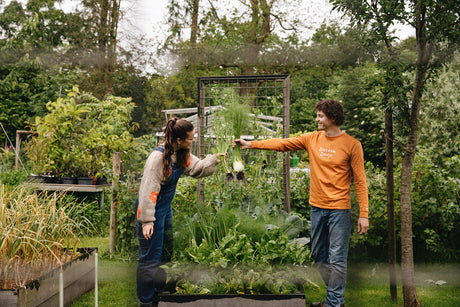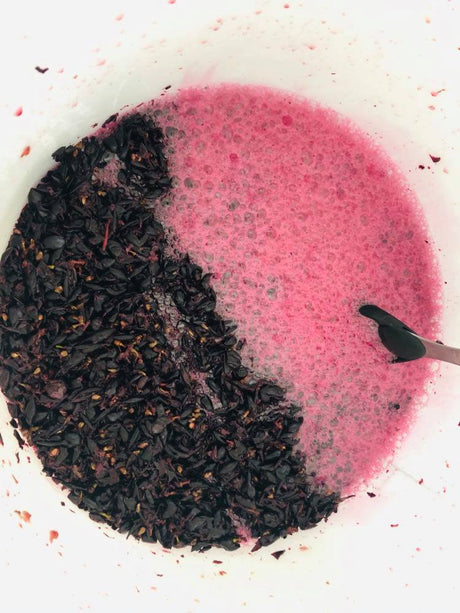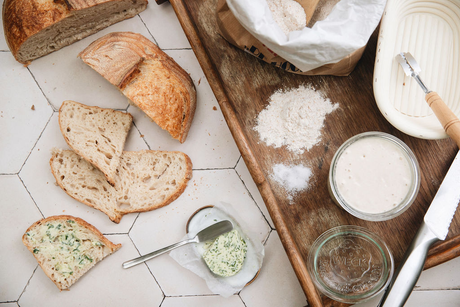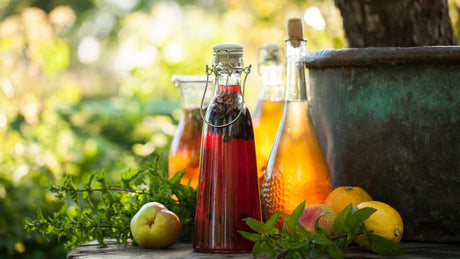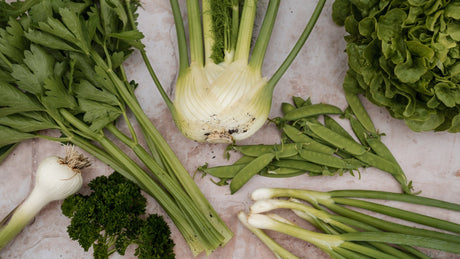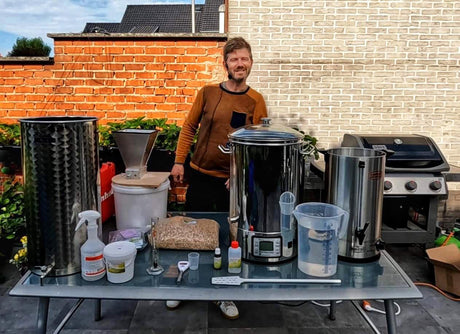Dear, in the newsletter of December 7 about soil preparation there is an incorrect link. The article about soil preparation can be found
here
Pre-sowing for the vegetable garden - The start of your vegetable garden plants ... wonderfully relaxing
You can also choose to buy
vegetable garden plants . That is easy and you usually have, certainly here in
our webshop , always the good quality. If the planting material is not of top quality, we do not offer it. But sowing yourself is of course very magical. Regularly going to look at your seedlings, see how they grow, what their needs are, ... wonderful
Introduction to pre-sowing
What is the difference between sowing and pre-sowing? Pre-sowing is just like sowing but with 'for' in front, right? Funny, Tom. No, seriously now ... when you cannot sow directly in the ground where you will eventually harvest, we speak of pre-sowing. With pre-sowing, you also have to prick out and plant out at a later time, these terms will also be discussed later.
Example: In this video I sow my
peppers and
paprika 's for December 20, 2017:
https://youtu.be/N6coT8mDQ94
Why pre-sow?
Due to bad weather conditions
- You have soil that is too wet or frozen to work. Example: Do you have heavy clay soil that is one block of clay in the spring or is there a layer of water or ice on it and is your vegetable garden a (skating) pond, then it is best to sow in advance.
- It is still too cold outside, your seeds would germinate much too late if we let nature take its course. So you want to gain time by sowing under glass, indoors on the windowsill or in a propagator . Example: peppers would never be able to ripen if they had to germinate outside in the open ground in April/May (if the pepper seeds would not rot away).

My homemade sowing and cutting soil (recipe later in this article)
- Your seeds are too small to sow in the open ground and would be washed away by the weather and wind. Example: Small flower seeds (Lobelia), small herb seeds (thyme) or small vegetable seeds (cabbage) are better sown in advance.
- Your celeriac seeds germinate very slowly. Slower than weed seeds nearby. Your young plants would get too much competition from weeds, so we sow them beforehand.
Too much nutrition in the soil to sow directly
- The soil is too rich in nutrients to grow seedlings. All the energy a seedling needs to grow into a small plant with a first pair of true leaves is in the seed itself. If you sow in soil that is too nutritious, your seeds can burn due to too many nutrients. You can avoid these conditions by adding sowing and cutting soil to your sowing hole or furrow in which your seeds will germinate more easily. Example: I sow my carrots in furrows of 5 cm deep filled with sowing and cutting soil that contains little nutrition.
Pre-sowing makes good vegetable garden management easier
- Location: Pre-sowing on your windowsill or in a propagator is best done compactly. Pre-sow a tomato plant Tiny Tim on your terrace in a 5 liter pot ? Then your windowsill, the space under your grow lights or your propagator will be full immediately. Pre-sowing in smaller pots , trays or seed trays saves space.
- Watering: You can also water more easily when your plants are in a smaller space. I put all my trays , pots and seed trays in black growing trays and can water them very easily. This way the plants absorb the water from below. This stimulates root growth much better than if we were to water above the ground.

Watering in a base or growing container
- You also save precious seed or potting soil . A small plant does not need the nutrition of a mature plant in the open ground. With 1 coconut block I can make 70 liters of seed and cutting soil, with which I fill +/- 10 seed and cutting trays in which I can actually fill 700 cells with plants. With the same 70 liters I can only fill 40 to 50 well-pressed P9 pots . Pre-sowing therefore saves space and also soil.
- Back-up plants if things go wrong: Not every seed germinates. Even if you have top-quality vegetable garden seeds from Moestuinweetjes, sometimes you have a seed that has no germination power. If you have pre-sown multiple plants of a certain type, you still have back-up plants. If you have plants left over, you can still share or exchange them. Try not to be tempted to plant all your back-up plants in the same space provided. You will then have to use smaller planting distances and you will often have less harvest per m² than when you use the correct planting distances.
- Choice: If you sow in advance, you retain the choice of which plants you will continue to grow in which place. Granted, in open ground you can also thin out, but you can no longer say: 'I want winter purslane in this place when you have already sown rocket seeds in that place.

Pre-sown plants in a
tray take up less space
Where to pre-sow?
Pre-sowing can be done in different
trays ,
seed trays or pots? In this chapter you can read what I use and my idea behind it. Of course everyone has their own preferences.
A seed and cutting tray
This is also called a growing tray. A growing tray has cells in which you can efficiently sow young plants. The plants usually remain in the sowing and cutting
tray or growing tray until the second real pair of leaves or a little longer. The cells separate each plant from each other and ensure that the young roots do not become entangled. I do not like to unravel the roots of slow-growing plants such as
peppers ,
bell peppers and
eggplants because that means a growth stop. I am also not very good at unraveling roots when planting out/prickling out, so I am a fan of
trays .
You have the soft and hard
trays . The soft ones break faster, are cheaper but you can squeeze the cell at the bottom to release the plug, the cell, more easily. The hard
trays are for life and can be reused indefinitely. They are a bit more expensive and you have to spoon out your plugs or push the block upwards with a nail with a thick head at the bottom of the cell. In this case, the block should not be too moist. I do not water my
trays in the last few days before planting or prickling out because I can get the plugs out of the
tray more easily then. However, do not plant out bone-dry plugs, that is also not good.
Watering in trays
When I sow, I make sure that my sowing and cutting soil is moist (see further under 'How to pre-sow'). I also keep the top layer of the seed
trays moist regularly with a
plant sprayer . This means that I don't have to give much water for germination. Once germinated, I know that roots are on their way to the bottom of the
trays . To stimulate this, I give water in a base or
black growing tray in which I place the seed
tray . I never give more than 5 mm of water in the tray for a
tray . Later, when there are 24 P9
pots in the
black growing tray with, for example,
tomato plants , I often pour in much more.
Which crops do I grow in trays ?
- Fruit crops: peppers , paprika 's, aubergines ( trays with holes of 4 to 4.5 cm)
- Leafy vegetables: lettuce , winter purslane , rocket, mustard lettuce, lettuce , spinach , ... ( trays with holes of 3.5 to 4 cm)
- Cabbage varieties (except radish and kohlrabi, which I sow directly): cauliflower , kale , broccoli , red cabbage , white cabbage,Savoy cabbage and Brussels sprouts.
-
potatoes : Huh ? potatoes ? Yes, but not in soil. The trays are ideal for sprouting your potatoes , you can put your potato seed potatoes in them nicely. Egg cartons also work, but they fall over more quickly.
- Root vegetables: Beetroot and fennel .
Should you plant the trays directly or prick them out?
Most of the crops that I pre-sow in a
tray , I prick out in a P7, P9 or P11 pot. Especially in the spring when the plants are not yet ready to go outside and they are starting to need nutrition. If you hate prick out, start pre-sowing a little later in the year. You can often plant out in the
greenhouse or garden shed right away. If not, it is better to prick out, it feels like taking off shoes that are too tight for your plants, it also gives the plants a good feeling to continue growing.
Sow directly in pots
Sometimes I sow directly into
pots , usually P7, P9 or P11 pots. The number in the name of the pots is the length and width of the pots in centimetres. The depth is variable but is usually slightly deeper than the length and width of the top view.

P9 pot
Why sow directly in pots?
I do this with crops that don't like to be pricked out or crops with large
seeds for which
trays are too small. I also do this with crops that have deep roots. And finally, I also do it with crops that I normally sow or plant outside early but that is not possible due to the weather (frost or excess water).
You might now say: 'Tom, then your plants will lack nutrients in sowing and cutting soil when they continue to grow'. Correct thinking. In the chapter above 'Why pre-sow, point 3' I said that seeds should not be sown in nutrient-rich vegetable garden or
potting soil but better in poorer sowing and cutting soil that has a better structure. In order to be able to pre-sow in pots in sowing and cutting soil without the young plant starving after the first two real leaves, I have a trick. I fill 3/4 of the contents of my pot with
potting soil for vegetable gardens that does contain enough nutrients. I fill the top layer of the pot with 1/4 sowing and cutting soil. I sow the seed in that top layer of sowing and cutting soil and when it continues to grow and needs nutrition, it comes across the bottom layer
of potting soil that does contain nutrients.
Which crops do I sow directly in pots ?
-
leek : I sow my very early and summer leek in a P9 pot in a top layer of sowing and cutting soil
-
seed potatoes onions, shallots and/or garlic when the ground is still frozen in February/March and my seed potatoes threaten to germinate.
- Legumes: peas , snow peas and broad beans when it remains too cold or damp for too long (especially in wet clay soil it is not possible to sow so early).
Water pots quickly and efficiently
In this piece of film you can see the growing
containers in which I water:
https://youtu.be/BfNMD9urzx8?t=92
For germination, I keep the top layer moist with a
plant sprayer , just like with the
trays . After germination, I no longer water from above. The pots with the initial P have holes at the bottom. This makes it easy to water from below. Place your pots in a
black growing tray and pour 5 to 10 mm of water into the tray, the water is absorbed by the
potting soil and reaches the roots of the plant.
If the cultivation of a certain vegetable requires that your plants remain in
potting soil for longer than 4 to 6 weeks (
leek for example), it is useful when you can administer a universal liquid fertilizer in the water. The first 4 to 6 weeks there is enough nutrition in the
potting soil , after that I give universal liquid fertilizer every 2 weeks.
You can also use
seed trays to sow in. Simple rectangular trays with holes at the bottom. Handy gardeners make them themselves from recycled material.
seed tray s for broadcast sowing
You can sow broadcast in a
seed tray . That means that you scatter the seeds randomly at a certain distance. Personally, I don't do that much. I do it sometimes for
lettuce when it has to go quickly. A shovel of sowing and cutting soil, moisten it well, put some
lettuce seeds on it and cover with some more
perlite or
vermiculite , water with a
plant sprayer and in 5 minutes you have sown hundreds of lettuce heads. A bit more work when pricking out because the roots of the small plants become more entangled if you don't prick out in time, but many people do it this way.

seed
trays with holes in the bottom
seed trays for orderly pre-sowing
I have often seen it on photos of other vegetable gardeners. A
seed tray with cabbage or
beetroot plants in neat lines, sprinkled with
perlite granules or crushed sand (coarse sand). I prefer
trays for pre-sowing because that makes planting out or prickling out easier for me. More information about sprinkling and much more in the next chapter.
How to sow seeds step by step
Fill your trays with seed and cutting soil:
- Use a good sowing and cutting soil. This soil is like the infancy of your plants and is crucial for the first steps and the growth of your plants. You can buy sowing and cutting soil in ready-made bags. I make mine myself based on coconut soil , very airy soil without unevenness and lumps. It is a residual product from the food sector so interesting to reuse.
- Mix in a black seed tray or bucket 2/4 volume coconut soil with 1/4 volume perlite granules and 1/4 sieved potting soil for vegetable gardens. The coconut soil gives a very good structure to your plants to root in, the perlite granules retain the water in your soil and give airy soil. The potting soil gives a little bit of nutrition.
- For strong seedlings I also add one gram (tip of a coffee spoon) of magnesium sulphate per litre of soil.
- Mix everything well.
- Add water with a watering can and/or plant sprayer until the mixture is moist. You will know if your soil is good when you squeeze the well-mixed soil and a little moisture runs between your fingers.
- Fill your seed and cutting tray , your pots or your seed trays with the mixture and press the seed soil with your hands or with the bottom of another tray , pot or seed tray . Normally your tray , pot or seed tray is
 My homemade sowing and cutting soil (recipe later in this article)
My homemade sowing and cutting soil (recipe later in this article) Watering in a base or growing container
Watering in a base or growing container Pre-sown plants in a tray take up less space
Pre-sown plants in a tray take up less space P9 pot
P9 pot seed trays with holes in the bottom
seed trays with holes in the bottom

